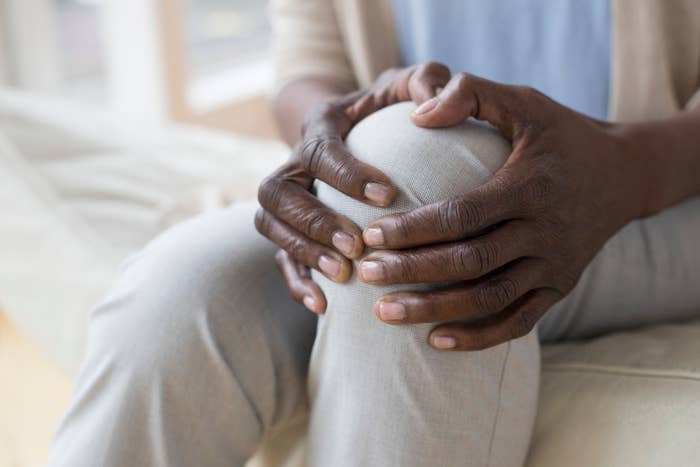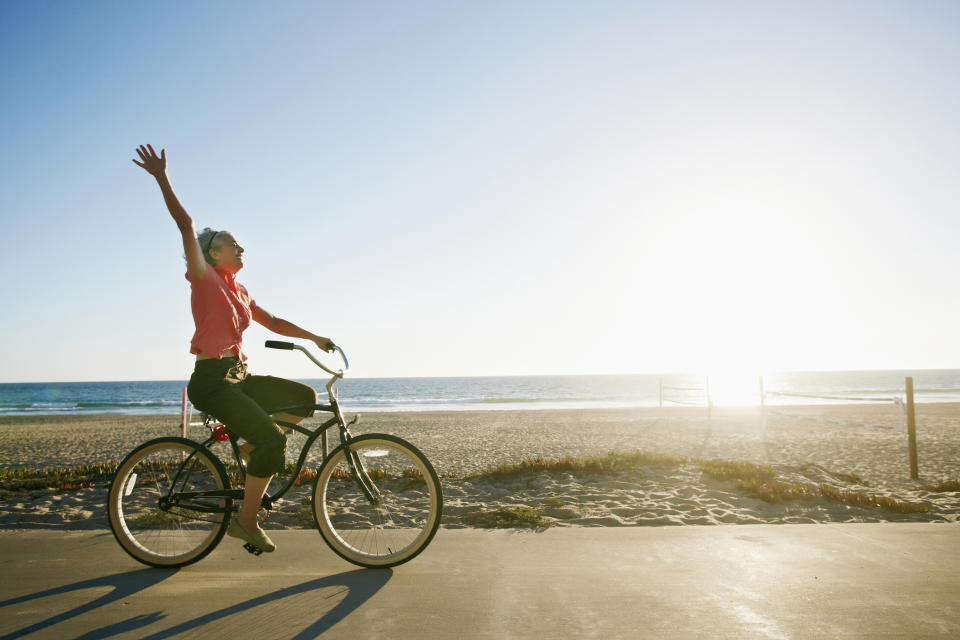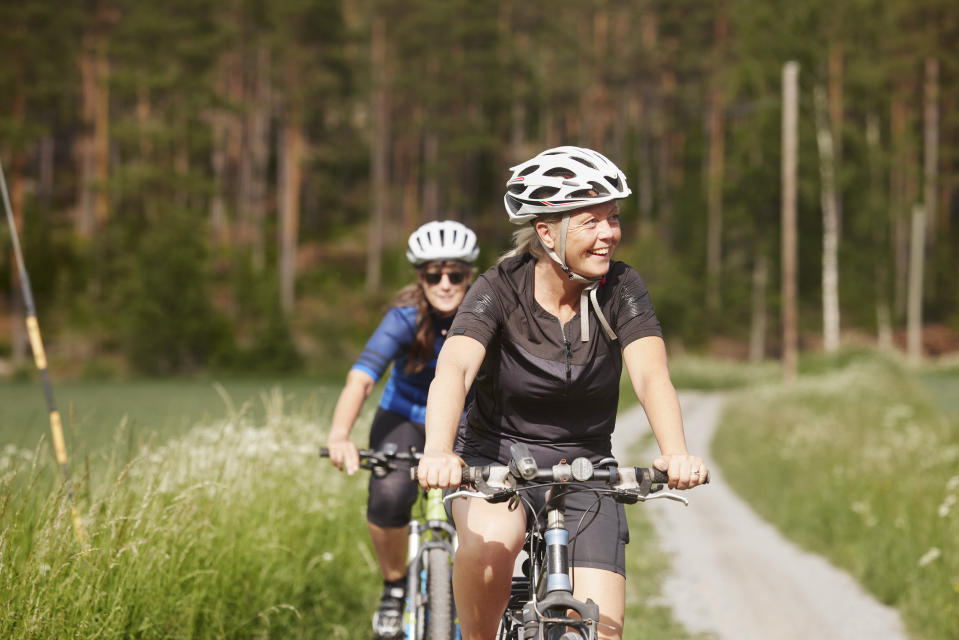This Study Revealed The 1 Exercise That Can Greatly Reduce Knee Pain

Knee pain is, unfortunately, a common struggle as we age ― and while managing the pain may feel like an uphill battle, experts say there’s an exercise you can try to help your knee health.
According to a recent study published in the Medicine and Science in Sports and Exercise journal, bike riding is supremely good for knee health. The study involved 2,607 people, with an average age of 64. Study participants self-reported their bicycling frequency throughout their lifetime. Researchers checked for knee osteoarthritis by taking x-rays of participants’ knees.
People who rode a bike, whether outdoors or an indoor stationary bike, had fewer occurrences of frequent knee pain and were less likely to have knee osteoarthritis.
“Osteoarthritis is a disease that affects different joints, in with the knee being the most common, and it also can affect your hips, your ankles, your hands,” said Daniel White, an associate professor in the department of physical therapy and the director of the Active Lab at the University of Delaware who was not affiliated with the study.
“It involves degeneration of cartilage, but also of the bone, the joint itself ... an influx of fluid, and it’s a very common chronic condition in middle to older age adults,” White added. Signs of the condition include stiff knees, swollen knees and a cracking noise when you move the joint.
Why riding a bike is great for your knees

“Bike riding ... it’s very low impact. The force that goes to your knee while you’re bike riding is a fraction of what happens when you walk or even run,” White explained. However, even though it’s low impact, “you still get the benefits of strengthening your muscles, having your cardiovascular system be taxed, as well as the other health benefits that come along with the exercise.”
Low impact exercise puts less strain on your knee’s cartilage, added Dr. Michael Yang, a sports medicine physician at Jefferson Health in Philadelphia who was not affiliated with the study.
“Cartilage is just like a cushion pad, like your shock absorber,” Yang explained. And as we get older, “it’s not just the arthritis, which is on the bone, it’s also the cartilage in between the bones that are getting a little bit worn down.”
But there’s good news: If “you can do activities to strengthen the area, while you are also decreasing the impact ... on the cartilage, then you should have less symptomatic arthritis pain, and less development of arthritis,” Yang said. This is essentially what the study found.
Bicycling helps to strengthen the musculature around the knee, which also improves your knee joint health as a whole, said Dr. Jessica Tomazic, a sports medicine doctor at the Cleveland Clinic who was not affiliated with the study.
How much you need to bike to see knee benefits (and other alternative options)

Cycling can be an expensive hobby, with bikes regularly costing upward of $1,000 and even $2,000. But you don’t need to splurge on a pricy bike to see knee health benefits, Yang stressed. You don’t need to be a serious biker who puts in tons of miles every day either.
“It’s just as simple as getting on a stationary bike ― a lot of these things don’t require too much. If you have a bike in your garage, ride around the neighborhood first. If you have access to a gym, get on the stationary bike 15 to 20 minutes, two or three times a week,” Yang said.
It’s important to note that bicycling isn’t the only exercise that can benefit folks with arthritis. According to White, this study underscored previous research that shows general physical activity and exercise are not only preventative in the development of knee osteoarthritis, but also can be an effective treatment for people with the condition or knee pain.
“Even in this study, they talk about the fact that other activities — like swimming, running, strength training — help decrease what we call symptomatic arthritis ... you can have arthritis and you may not have as much pain from the arthritis with exercise,” Tomazic added.
Many people who have arthritis are nervous about exacerbating their pain by exercising, which is a natural fear, White said. But that shouldn’t stop you from trying — and you can always talk to your doctor beforehand to get the right exercise regimen for you.
Additionally, White said it’s normal for the knee to hurt after exercise, but it should go away quickly if you notice any pain at all. And, as mentioned above, exercising your knee will only help your ongoing pain as you move forward.
“Finding something that helps you be active is the most important thing you can do,” White said. “So, for some, it’s biking, but then for others, it might be swimming and then for others it might be going for a walk.”
As people age, physical activity is key to delaying the effects of aging on your muscles and joints, White added, “especially when you have a chronic disease, like knee arthritis or knee osteoarthritis.”
If you want to start cycling outdoors, Tomazic stressed that it’s important to do so safely: Wear a helmet and other protective gear like kneepads and elbow pads, consider purchasing safety lights, stay in bike lanes and follow the rules of the road.
“If you’re nervous about starting or not sure of what you know, seeking help from a physical therapist is a great way to go,” White said. Physical therapists can help you create a custom exercise plan to combat any knee pain and keep your knees as healthy as possible as you get older.This article originally appeared on HuffPost.

 Yahoo Lifestyle
Yahoo Lifestyle 
